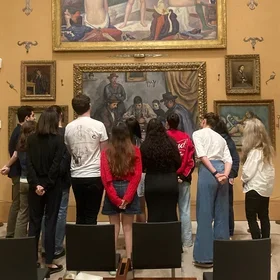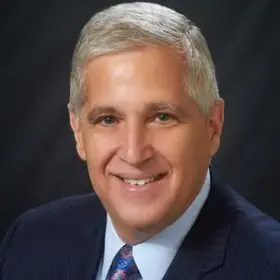By Steven Cohen, Ph.D., Director of the M.S. in Sustainability Management program, School of Professional Studies
Most of the world’s population now lives in cities, and that means that for over four billion humans, the only way we get to spend time outdoors is in public space. Land uses in cities circulate and evolve over time. The slums of Manhattan’s Lower East Side are now gentrified. The elevated freight train on the west side of Manhattan is now the magnificent High Line Park. All over the world, industrial spaces have been converted to park spaces, as my colleague Dong Guo and I discuss in the second edition of The Sustainable City. While New York City’s pathetic parks budget doesn’t prove it, as the first quarter of the 21st century ends, parks are a necessity, not a luxury. We need to develop a creative way to expand and fund our parks. To build new parks, we need to use our imagination and find open spaces that are underutilized and repurpose them as public spaces. We also need to develop dedicated revenue streams to fund our parks. In this Saturday’s New York Times, John Leland wrote a wonderful piece about an inspiring effort by a “typical” New Yorker and Community Board member, Rosa Chang, to build a new park under the Brooklyn Bridge. According to Leland:
“The area under the Brooklyn Bridge in Lower Manhattan is a forbidding swath of rubble and construction equipment, cut off from the sky by six lanes of clattering bridge traffic. To most of the world, it communicates a single message: keep out. To Rosa Chang, it conveyed something different: New York City’s next great park… Through her community board meetings, she met a skateboarder named Steve Rodriguez, who had been trying for years to open a section under the bridge that had been a mecca for skaters until 2010, when the city’s Department of Transportation closed off the area to make bridge repairs.”
Leland’s piece notes that the first of the nine acres of what Chang calls Gotham Park has opened as a skateboard park. While the Department of Transportation seems reluctant to give up its storage and parking spaces, they are fighting a losing battle and will need to find some warehouse space in a less prominent location for their equipment. The profile of Chang is an example of the heroic advocate that seems typical of successful park construction and revitalization efforts. We saw that with the High Line and Central Park, and that seems to be the case with the proposed “Gotham Park.”
Here in New York, we need to take advantage of the changing economic geography of our city. When the west side of Manhattan was a center of manufacturing, the waterfront was devoted to commerce. Then, manufacturing died and was replaced by the service economy. In the ensuing half-century, the Hudson waterfront became a wonderful and expansive network of parks. This beautiful public space enhances the quality of life for residents, workers, and visitors.
With careful design and imagination, industrial spaces can be reclaimed for recreation, socialization, and contemplation. Skateboarding can take place near urban gardening, which can be close to a playground for children and an exercise space for grown-ups. All of this costs money to build and to then maintain. Some of these resources can come from private sources, but some must also come from public sources. New York City’s parks always lose in the competition for resources with “essential services” such as police, fire, transportation, homeless services, welfare, and education. We have not figured out a way to provide a dedicated revenue stream to adequately fund our parks.
We need to get creative and develop a new way to fund our parks. My view is that we need to develop an institution like the Water Authority, built on a specific user fee. While we can’t and shouldn’t charge a park user fee, there is another approach that could work. The most logical source of revenue would be one based on a modest increase in property tax that is placed in a trust fund beyond the reach of elected officials and allocated by a quasi-governmental authority that is prohibited from diverting the resources to non-park uses. The amount of funding would be pegged at 1% of the city’s total budget, and taxes would be automatically adjusted to meet that number. Last year, New York City generated about $32 billion in property tax. A tax increase of about 3.1% would generate about a billion dollars a year, or close to 1% of the city budget, for a Parks Authority Trust Fund. This would remove parks from the budget competition and would be a tax investment that would pay off in increased property values. While no one wants to pay higher taxes, if it generated visible improvements in new parks and maintenance of old parks, people would come to support it. To support this tax, we’d need to see much more political courage than the political cowardice we are seeing with congestion pricing.
I am convinced that, like water, energy, and transit, we need dedicated user fees to fund a critical resource like parks. Parks will never compete successfully against life and death issues like police, fire, and feeding hungry people. A dedicated element of property tax enables some of those who benefit financially from enhanced parks to pay for that enhancement. It is well known that property that is close to a park is worth more than property far away. Park views are particularly valuable. That is the logic of funding parks directly with property tax. While it’s not a perfect mechanism, a quasi-governmental authority has proven to be a successful mechanism for insulating a service from the most intense forms of partisan politics.
New York City’s parks total over 29,000 acres in 1,942 sites and cover 14% of the city’s land. New York has improved park access beginning with the Bloomberg mayoralty, and according to the Trust for Public Land, the city is ranked 12th in the nation for park quality. While New Yorkers’ access to parks is excellent, the condition and size of our parks are not as good as other cities. Although a ranking of 12th is not bad, the best city in the nation should also have the best parks. Unfortunately, this will never happen, given the inadequate resources now spent on the city’s parks. According to the New York City Council Finance Division:
“The Department of Parks and Recreation’s (DPR or the Department) Fiscal 2024 budget in the Preliminary 2024 Financial Plan (Preliminary Plan) is $582.7 million, including $440.7 million for personal services (PS) and $142 million for other than personal services (OTPS). The Department’s Fiscal 2024 budget is $41.5 million less than the Fiscal 2023 Adopted Budget, a decrease of $15.7 million in the PS budget and $25.8 million in the OTPS budget. This Department’s budget represents less than one percent of the City’s total Fiscal 2024 Preliminary Budget of $102.7 billion… The Fiscal 2024 Preliminary Capital Commitment Plan includes $3.9 billion in Fiscal Years 2023-2027 for DPR (including City and non-City funds). This represents four percent of the City’s total $96.5 billion Preliminary Capital Commitment Plan...”
A dedicated trust fund for parks could provide resources to repay debt and dramatically increase capital spending. The $500 million annual parks budget could double to about a billion dollars a year or one percent of the city budget. A Parks Authority could fund fully staffed recreation programs, new parks, new park facilities, and better maintenance of existing parks. Most importantly, the parks budget could be removed from city budget politics. It’s clear that the constituency for funding parks is failing to successfully compete for resources. A one-time structural fix is needed for New York City to build and maintain the parks it needs and deserves.
Views and opinions expressed here are those of the authors, and do not necessarily reflect the official position of Columbia School of Professional Studies or Columbia University.
About the Program
The Columbia University M.S. in Sustainability Management program offered by the School of Professional Studies in partnership with the Climate School provides students cutting-edge policy and management tools they can use to help public and private organizations and governments address environmental impacts and risks, pollution control, and remediation to achieve sustainability. The program is customized for working professionals and is offered as both a full- and part-time course of study.



